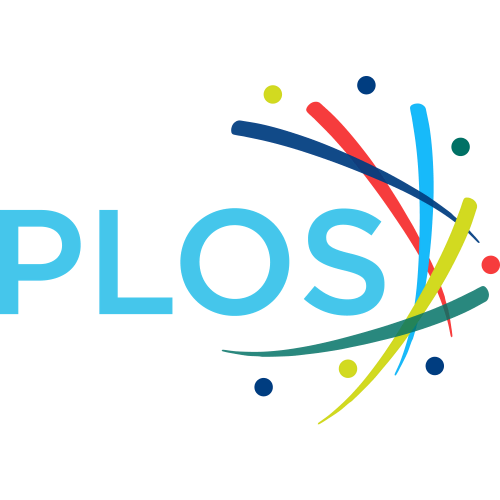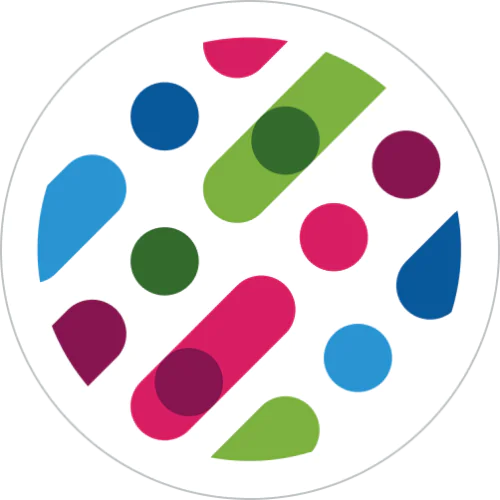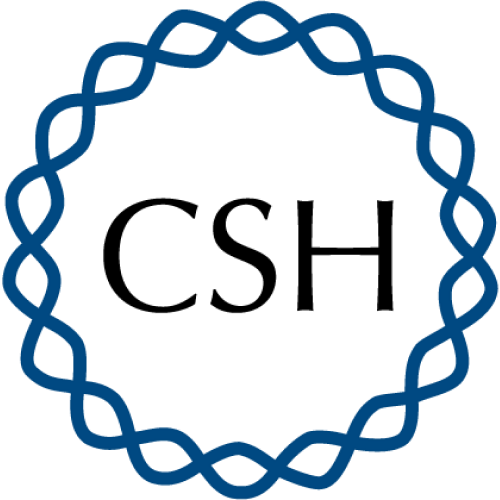Open Access


Frontiers in Genetics, volume 6
Telomere DNA recognition in Saccharomycotina yeast: potential lessons for the co-evolution of ssDNA and dsDNA-binding proteins and their target sites
2
Hostos Community College, City University of New York, Bronx, NY, USA
|
Publication type: Journal Article
Publication date: 2015-05-01
Journal:
Frontiers in Genetics
Quartile SCImago
Q2
Quartile WOS
Q2
Impact factor: 3.7
ISSN: 16648021
PubMed ID:
25983743
Genetics
Molecular Medicine
Genetics (clinical)
Abstract
In principle, alterations in the telomere repeat sequence would be expected to disrupt the protective nucleoprotein complexes that confer stability to chromosome ends, and hence relatively rare events in evolution. Indeed, numerous organisms in diverse phyla share a canonical 6 bp telomere repeat unit (5’-TTAGGG-3’/5’-CCCTAA-3’), suggesting common descent from an ancestor that carries this particular repeat. All the more remarkable, then, are the extraordinarily divergent telomere sequences that populate the Saccharomycotina subphylum of budding yeast. These sequences are distinguished from the canonical telomere repeat in being long, occasionally degenerate, and frequently non-G/C-rich. Despite the divergent telomere repeat sequences, studies to date indicate that the same families of single-strand (ss) and double-strand (ds) telomere binding proteins (i.e., the Cdc13 and Rap1 families) are responsible for telomere protection in Saccharomycotina yeast. The recognition mechanisms of the protein family members therefore offer an informative paradigm for understanding the co-evolution of DNA-binding proteins and the cognate target sequences. Existing data suggest three potential, inter-related solutions to the DNA recognition problem: (i) duplication of the recognition protein and functional modification; (ii) combinatorial recognition of target site; and (iii) flexibility of the recognition surfaces of the DNA-binding proteins to adopt alternative conformations. Evidence in support of these solutions and the relevance of these solutions to other DNA-protein regulatory systems are discussed.
Citations by journals
|
1
2
3
|
|
|
Scientific Reports

|

Scientific Reports
3 publications, 14.29%
|
|
Frontiers in Genetics

|

Frontiers in Genetics
2 publications, 9.52%
|
|
Microbiology spectrum

|

Microbiology spectrum
1 publication, 4.76%
|
|
Frontiers in Cell and Developmental Biology

|

Frontiers in Cell and Developmental Biology
1 publication, 4.76%
|
|
Journal of Molecular Evolution

|

Journal of Molecular Evolution
1 publication, 4.76%
|
|
Current Genetics

|

Current Genetics
1 publication, 4.76%
|
|
Communications Biology

|

Communications Biology
1 publication, 4.76%
|
|
PLoS ONE

|

PLoS ONE
1 publication, 4.76%
|
|
PLoS Genetics

|

PLoS Genetics
1 publication, 4.76%
|
|
Trends in Genetics

|

Trends in Genetics
1 publication, 4.76%
|
|
DNA Repair

|

DNA Repair
1 publication, 4.76%
|
|
Biochemistry

|

Biochemistry
1 publication, 4.76%
|
|
Cell Cycle

|

Cell Cycle
1 publication, 4.76%
|
|
Genome Biology and Evolution

|

Genome Biology and Evolution
1 publication, 4.76%
|
|
Current Opinion in Structural Biology

|

Current Opinion in Structural Biology
1 publication, 4.76%
|
|
eLife

|

eLife
1 publication, 4.76%
|
|
FEMS Microbiology Reviews

|

FEMS Microbiology Reviews
1 publication, 4.76%
|
|
Genome Research

|

Genome Research
1 publication, 4.76%
|
|
1
2
3
|
Citations by publishers
|
1
2
3
4
5
6
|
|
|
Springer Nature

|

Springer Nature
6 publications, 28.57%
|
|
Frontiers Media S.A.

|

Frontiers Media S.A.
3 publications, 14.29%
|
|
Elsevier

|

Elsevier
3 publications, 14.29%
|
|
Public Library of Science (PLoS)

|

Public Library of Science (PLoS)
2 publications, 9.52%
|
|
Oxford University Press

|

Oxford University Press
2 publications, 9.52%
|
|
American Society for Microbiology

|

American Society for Microbiology
1 publication, 4.76%
|
|
American Chemical Society (ACS)

|

American Chemical Society (ACS)
1 publication, 4.76%
|
|
Taylor & Francis

|

Taylor & Francis
1 publication, 4.76%
|
|
eLife Sciences Publications

|

eLife Sciences Publications
1 publication, 4.76%
|
|
Cold Spring Harbor Laboratory

|

Cold Spring Harbor Laboratory
1 publication, 4.76%
|
|
1
2
3
4
5
6
|
- We do not take into account publications that without a DOI.
- Statistics recalculated only for publications connected to researchers, organizations and labs registered on the platform.
- Statistics recalculated weekly.
{"yearsCitations":{"type":"bar","data":{"show":true,"labels":[2016,2017,2018,2019,2020,2021,2022,2023],"ids":[0,0,0,0,0,0,0,0],"codes":[0,0,0,0,0,0,0,0],"imageUrls":["","","","","","","",""],"datasets":[{"label":"Citations number","data":[3,1,1,3,5,3,1,4],"backgroundColor":["#3B82F6","#3B82F6","#3B82F6","#3B82F6","#3B82F6","#3B82F6","#3B82F6","#3B82F6"],"percentage":["14.29","4.76","4.76","14.29","23.81","14.29","4.76","19.05"],"barThickness":null}]},"options":{"indexAxis":"x","maintainAspectRatio":true,"scales":{"y":{"ticks":{"precision":0,"autoSkip":false,"font":{"family":"Montserrat"},"color":"#000000"}},"x":{"ticks":{"stepSize":1,"precision":0,"font":{"family":"Montserrat"},"color":"#000000"}}},"plugins":{"legend":{"position":"top","labels":{"font":{"family":"Montserrat"},"color":"#000000"}},"title":{"display":true,"text":"Citations per year","font":{"size":24,"family":"Montserrat","weight":600},"color":"#000000"}}}},"journals":{"type":"bar","data":{"show":true,"labels":["Scientific Reports","Frontiers in Genetics","Microbiology spectrum","Frontiers in Cell and Developmental Biology","Journal of Molecular Evolution","Current Genetics","Communications Biology","PLoS ONE","PLoS Genetics","Trends in Genetics","DNA Repair","Biochemistry","Cell Cycle","Genome Biology and Evolution","Current Opinion in Structural Biology","eLife","FEMS Microbiology Reviews","Genome Research"],"ids":[13767,13242,17855,12128,16558,16818,11778,24963,785,14739,13424,9964,16553,15411,13702,24138,22783,9342],"codes":[0,0,0,0,0,0,0,0,0,0,0,0,0,0,0,0,0,0],"imageUrls":["\/storage\/images\/resized\/voXLqlsvTwv5p3iMQ8Dhs95nqB4AXOG7Taj7G4ra_medium.webp","\/storage\/images\/resized\/4QWA67eqfcfyOiA8Wk7YnqroHFqQbTsmDJUYTCTg_medium.webp","\/storage\/images\/resized\/VPE7q24PXoHr5SS2SqfEgxccSMUxWLfZINOX60uo_medium.webp","\/storage\/images\/resized\/4QWA67eqfcfyOiA8Wk7YnqroHFqQbTsmDJUYTCTg_medium.webp","\/storage\/images\/resized\/voXLqlsvTwv5p3iMQ8Dhs95nqB4AXOG7Taj7G4ra_medium.webp","\/storage\/images\/resized\/voXLqlsvTwv5p3iMQ8Dhs95nqB4AXOG7Taj7G4ra_medium.webp","\/storage\/images\/resized\/voXLqlsvTwv5p3iMQ8Dhs95nqB4AXOG7Taj7G4ra_medium.webp","\/storage\/images\/resized\/PRGhlgB4OKRltSNtT39eA6wlnOTGRap1QQ6FQHih_medium.webp","\/storage\/images\/resized\/PRGhlgB4OKRltSNtT39eA6wlnOTGRap1QQ6FQHih_medium.webp","\/storage\/images\/resized\/GDnYOu1UpMMfMMRV6Aqle4H0YLLsraeD9IP9qScG_medium.webp","\/storage\/images\/resized\/GDnYOu1UpMMfMMRV6Aqle4H0YLLsraeD9IP9qScG_medium.webp","\/storage\/images\/resized\/iLiQsFqFaSEx6chlGQ5fbAwF6VYU3WWa08hkss0g_medium.webp","\/storage\/images\/resized\/5YZtvLvkPZuc2JHOaZsjCvGSHFCuC3drUwN3YAc5_medium.webp","\/storage\/images\/resized\/yNSijlgQghQF53VZuyFLA30CKDe4j3HK74Vtpnxa_medium.webp","\/storage\/images\/resized\/GDnYOu1UpMMfMMRV6Aqle4H0YLLsraeD9IP9qScG_medium.webp","\/storage\/images\/resized\/eIZgkq1MRZyJ3hBkdupnUUv7wgB6zCl9D99SlPN5_medium.webp","\/storage\/images\/resized\/yNSijlgQghQF53VZuyFLA30CKDe4j3HK74Vtpnxa_medium.webp","\/storage\/images\/resized\/hg4jJjT8wVGtHstBCc0zk465Mg9pLx3G4odCDOqE_medium.webp"],"datasets":[{"label":"","data":[3,2,1,1,1,1,1,1,1,1,1,1,1,1,1,1,1,1],"backgroundColor":["#3B82F6","#3B82F6","#3B82F6","#3B82F6","#3B82F6","#3B82F6","#3B82F6","#3B82F6","#3B82F6","#3B82F6","#3B82F6","#3B82F6","#3B82F6","#3B82F6","#3B82F6","#3B82F6","#3B82F6","#3B82F6"],"percentage":[14.29,9.52,4.76,4.76,4.76,4.76,4.76,4.76,4.76,4.76,4.76,4.76,4.76,4.76,4.76,4.76,4.76,4.76],"barThickness":13}]},"options":{"indexAxis":"y","maintainAspectRatio":false,"scales":{"y":{"ticks":{"precision":0,"autoSkip":false,"font":{"family":"Montserrat"},"color":"#000000"}},"x":{"ticks":{"stepSize":null,"precision":0,"font":{"family":"Montserrat"},"color":"#000000"}}},"plugins":{"legend":{"position":"top","labels":{"font":{"family":"Montserrat"},"color":"#000000"}},"title":{"display":true,"text":"Journals","font":{"size":24,"family":"Montserrat","weight":600},"color":"#000000"}}}},"publishers":{"type":"bar","data":{"show":true,"labels":["Springer Nature","Frontiers Media S.A.","Elsevier","Public Library of Science (PLoS)","Oxford University Press","American Society for Microbiology","American Chemical Society (ACS)","Taylor & Francis","eLife Sciences Publications","Cold Spring Harbor Laboratory"],"ids":[8,208,17,344,19,142,40,18,6627,6909],"codes":[0,0,0,0,0,0,0,0,0,0],"imageUrls":["\/storage\/images\/resized\/voXLqlsvTwv5p3iMQ8Dhs95nqB4AXOG7Taj7G4ra_medium.webp","\/storage\/images\/resized\/4QWA67eqfcfyOiA8Wk7YnqroHFqQbTsmDJUYTCTg_medium.webp","\/storage\/images\/resized\/GDnYOu1UpMMfMMRV6Aqle4H0YLLsraeD9IP9qScG_medium.webp","\/storage\/images\/resized\/PRGhlgB4OKRltSNtT39eA6wlnOTGRap1QQ6FQHih_medium.webp","\/storage\/images\/resized\/yNSijlgQghQF53VZuyFLA30CKDe4j3HK74Vtpnxa_medium.webp","\/storage\/images\/resized\/VPE7q24PXoHr5SS2SqfEgxccSMUxWLfZINOX60uo_medium.webp","\/storage\/images\/resized\/iLiQsFqFaSEx6chlGQ5fbAwF6VYU3WWa08hkss0g_medium.webp","\/storage\/images\/resized\/5YZtvLvkPZuc2JHOaZsjCvGSHFCuC3drUwN3YAc5_medium.webp","\/storage\/images\/resized\/eIZgkq1MRZyJ3hBkdupnUUv7wgB6zCl9D99SlPN5_medium.webp","\/storage\/images\/resized\/hg4jJjT8wVGtHstBCc0zk465Mg9pLx3G4odCDOqE_medium.webp"],"datasets":[{"label":"","data":[6,3,3,2,2,1,1,1,1,1],"backgroundColor":["#3B82F6","#3B82F6","#3B82F6","#3B82F6","#3B82F6","#3B82F6","#3B82F6","#3B82F6","#3B82F6","#3B82F6"],"percentage":[28.57,14.29,14.29,9.52,9.52,4.76,4.76,4.76,4.76,4.76],"barThickness":13}]},"options":{"indexAxis":"y","maintainAspectRatio":false,"scales":{"y":{"ticks":{"precision":0,"autoSkip":false,"font":{"family":"Montserrat"},"color":"#000000"}},"x":{"ticks":{"stepSize":null,"precision":0,"font":{"family":"Montserrat"},"color":"#000000"}}},"plugins":{"legend":{"position":"top","labels":{"font":{"family":"Montserrat"},"color":"#000000"}},"title":{"display":true,"text":"Publishers","font":{"size":24,"family":"Montserrat","weight":600},"color":"#000000"}}}}}
Metrics
Cite this
GOST |
RIS |
BibTex
Cite this
GOST
Copy
Steinberg-Neifach O., Lue N. F. Telomere DNA recognition in Saccharomycotina yeast: potential lessons for the co-evolution of ssDNA and dsDNA-binding proteins and their target sites // Frontiers in Genetics. 2015. Vol. 6.
GOST all authors (up to 50)
Copy
Steinberg-Neifach O., Lue N. F. Telomere DNA recognition in Saccharomycotina yeast: potential lessons for the co-evolution of ssDNA and dsDNA-binding proteins and their target sites // Frontiers in Genetics. 2015. Vol. 6.
Cite this
RIS
Copy
TY - JOUR
DO - 10.3389/fgene.2015.00162
UR - https://doi.org/10.3389%2Ffgene.2015.00162
TI - Telomere DNA recognition in Saccharomycotina yeast: potential lessons for the co-evolution of ssDNA and dsDNA-binding proteins and their target sites
T2 - Frontiers in Genetics
AU - Steinberg-Neifach, Olga
AU - Lue, Neal F
PY - 2015
DA - 2015/05/01 00:00:00
PB - Frontiers Media S.A.
VL - 6
PMID - 25983743
SN - 1664-8021
ER -
Cite this
BibTex
Copy
@article{2015_Steinberg-Neifach,
author = {Olga Steinberg-Neifach and Neal F Lue},
title = {Telomere DNA recognition in Saccharomycotina yeast: potential lessons for the co-evolution of ssDNA and dsDNA-binding proteins and their target sites},
journal = {Frontiers in Genetics},
year = {2015},
volume = {6},
publisher = {Frontiers Media S.A.},
month = {may},
url = {https://doi.org/10.3389%2Ffgene.2015.00162},
doi = {10.3389/fgene.2015.00162}
}
